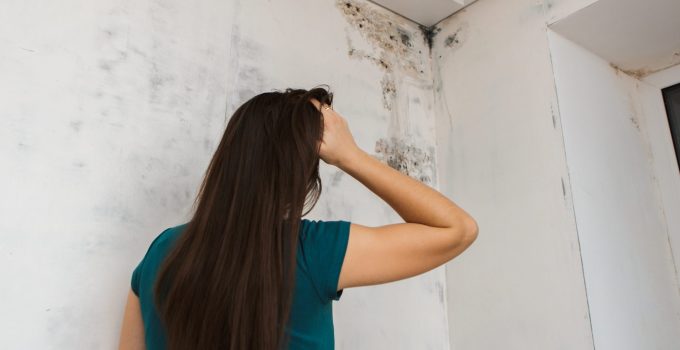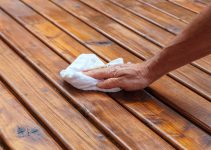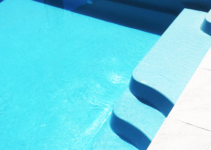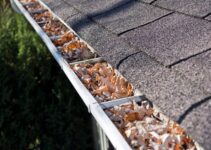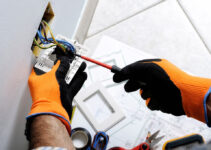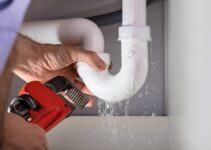There aren’t a lot of things that make people shrug as the mold does. Even though it has brought us some great things like penicillin and brie – it’s also infesting millions of homes all over the globe. Mold looks horrible – there’s just no way around it. Luckily, in most cases, you can do enough by yourself to get rid of it. However, more often than not – it comes back. Now, that’s not the reason to call a professional cleaning crew – that’s only for serious mold issues. Recurring mold can be dealt with quite easily. Here’s how.
How To Get Rid Of Mold?
Yes. Mold is annoying and even problematic in some cases. However, what it is not is hard to deal with – at least in usual circumstances. Here’s what you’ll need to get started.
- Bleach
- Vinegar (Apple Cider)
- Hydrogen Peroxide
- Tea Tree Oil
- Cleaning Cloth
- Spray Bottle
- Latex Gloves
Now, you don’t need all of these – gloves, spray bottle and cleaning cloth are essential. As far as the rest of it goes, bleach, ACV and hydrogen peroxide are commonly used to get rid of mold and they do a pretty good job. However, if you need something a bit stronger, tea tree oil should come in handy.
After you’ve cleaned it all up, it’s time to learn how to keep things that way. Here are some tips on how to prevent mold growth.
1. Keep The Humidity Low
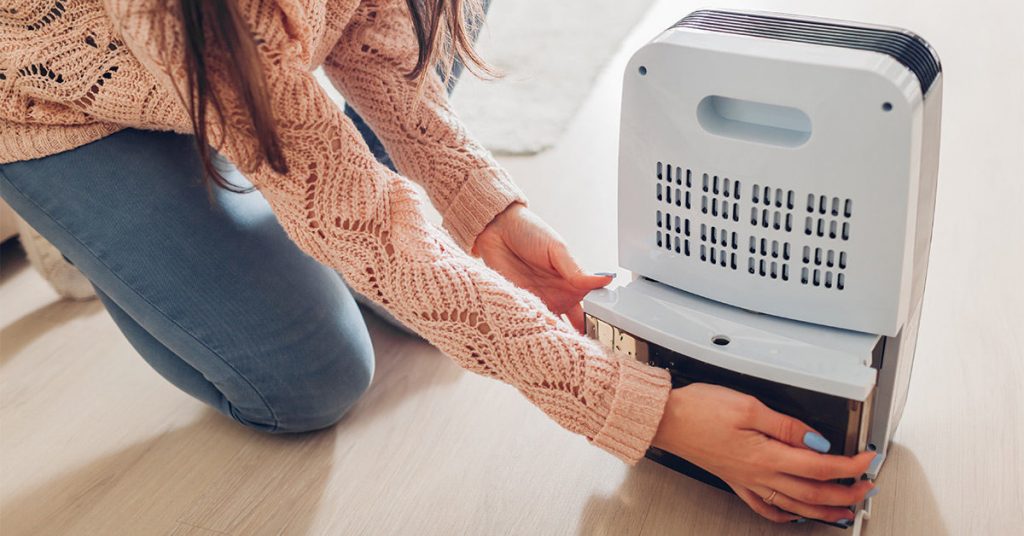
Source: healthline.com
Mold and mildew are the greatest fans of a humid environment and they simply thrive in it. For that, and many other reasons, to be honest, you should aim to keep the humidity levels where they normally should be. Now, some areas are naturally going to be more problematic as that’s just the way it is. However, if you know where those areas are – you’ll pay special attention to them.
Areas like kitchen, bathroom or basement should always be well-ventilated and as dry as possible. If you can’t ventilate or air out those spaces – you can always get a dehumidifier. A dehumidifier is basically the best way to achieve optimal humidity in your home.
Now, you don’t have to get this device, sometimes airing out is all it takes. However, if you live in humid regions, your options are pretty much limited to a dehumidifier or a whole-house HVAC humidification system.
2. Ventilate
Opening up your windows isn’t only so you can have some fresh air. Sure, that’s one reason behind it, but also, you have to ventilate the space you live in. You see, closed spaces get really moist and damp when they’re not ventilated regularly and that’s just ideal for mold and mildew. A batch of fresh air helps a lot with drying the problematic, musty areas of your home.
3. Use Better Cleaning Products

Source: moldmentorconsultants.com
You’ve noticed in the beginning when we named what you’ll need for mold cleanup, we haven’t named any industrial, toxic cleaners. Well, except for bleach. Anyway, it can be quite beneficial if you were to upgrade your cleaning products. In 2025, there’s an abundance of green cleaning products that won’t just mask the problem but will actually solve it.
You see, a majority of cheap cleaning products are filled with toxic chemicals and when you use them for cleaning you’re basically trading mildew for something, quite frankly, a lot worse than you might think.
4. Dry The Wet Areas
Now, we understand that you can’t just go about your day, drying the wall so it doesn’t get moldy. No, we’re talking about the areas that get wet on the regular. We’re talking about bathrooms, carpets, towels – all of those could be a potential cause for mildew.
According to oahumold.com, every major spill or wet area should be dried within the first 24 hours. Also, don’t just toss your wet t-shirt into a laundry basket. First, leave it out to air dry and then proceed to clean it.
5. Add Some Mold-Resistant Products In Your Home

Source: drccleaningsolutions.com
If none of the aforementioned tips work, maybe it’s time for some radical changes. A slight renovation of your space can go a long way when it comes to mold prevention. However, keep in mind that these changes aren’t cheap, so don’t make this your go-to option – try out the other ones first.
Basically, making only a few changes can go a long way. You can switch regular drywall with mold-resistant drywall, you could use mold inhibiting paints, you could check your pipes for leaks and so on. Mold-resistant drywall is arguably your best bet if you want to get rid of mildew for good. Unlike the regular drywall, mold-resistant ones use fiberglass instead of pressed paper, which makes it much more water-resistant.
6. Clean The Gutter
A mold can be easily caused by a roof leak caused by a clogged gutter. Clogged gutters can cause a lot of different issues, including mildew or even some structural damage. For that reason, it’s important that you check your gutter regularly and clean them if there’s a need for it and there almost always is.
7. Add House Plants
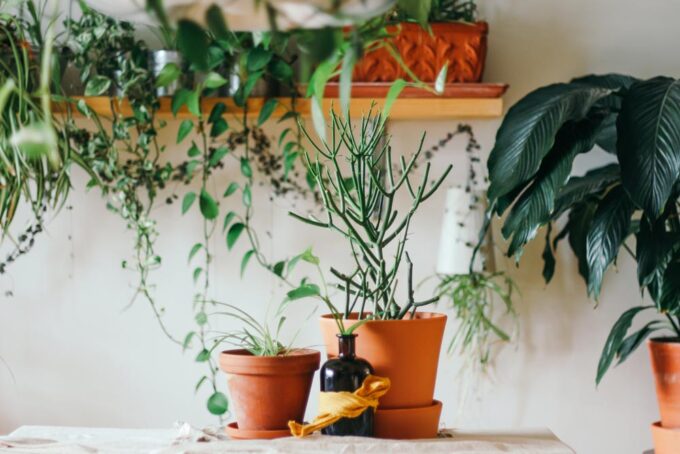
Source: dettaglihomedecor.com
House plants can be a really good friend to you in these moldy times. Not only do they look and smell good – they’re quite useful as well. They will absorb all the extra moisture from the atmosphere, making it really hard for mold to grow and infest your home.
However, keep in mind that the plants can become moldy as well. The soil from which the plants grow can get quite damp, which is not by mistake, we do water most of our indoor plants. Just make sure you don’t overdo it, as you’ll create a perfect breeding space for mildew and other pests.
In addition to that, you could try adding Taheebo tea to the water you use to water your plants. The oils of this tree are quite great at fighting against mold. Taheebo, for instance, is never moldy, despite living in rainforest and monsoon climate. A little bit of that super special skill can rub off on your other plants so they can do their job to the best of their abilities.
As you can see, there are a few prevention methods available. Hopefully, you like most of them and you’ve learned something new and useful today.

